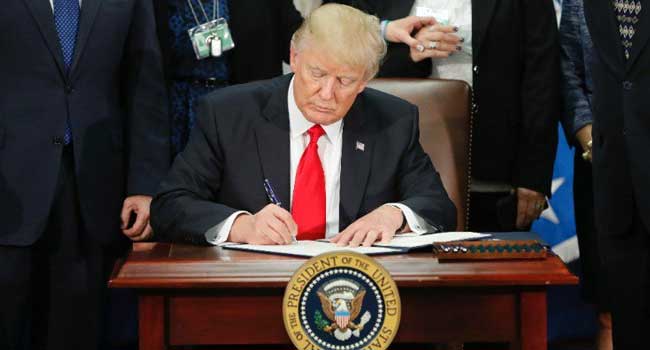
Everything You Need to Know about the Travel Ban
Over the weekend and into the week, the news of President Donald Trump’s executive order that aimed at reviewing and tightening the procedures for allowing refugees into the United States saw a massive push back from law makers, citizens and legal immigrants who disagreed with the move to block refugees from coming into the states.
On Monday, January 30, Press Secretary Sean Spicer told reporters that he believes the protests and remarks from government officials opposed to the order simply do not understand what President Trump has set out to do.
“The President is going to be very proactive with protecting this country,” Spicer said. “We are not going to wait to get attacked and then figure out how we can make sure it doesn’t happen again.”
So what does this executive order, or Travel Ban as most refer to it as, outline in its text? Here’s a summary:
- Blocks refugees from entering the U.S. for 120 days so officials can review the admissions process
- Bans the entry of all Syrians indefinitely
- Puts a 90-day hold on visas granted to people from Iran, Iraq, Libya, Somalia, Sudan, Syria and Yemen. The order says visa-holders from some countries do not provide the U.S. with enough information to determine whether they are safety threats or not. Because of this, the Secretaries of Homeland Security and State, along with the Director of National Intelligence, will conduct a review to identify what kind of information is needed, and which countries are not providing it. Diplomats, NATO visas and U.N. workers are exempt.
- Caps the number of employees allowed into the country at 50,000 in a fiscal year 2017.
The order also implements “new vetting measures to keep radical Islamic terrorists out of the United States of America.” President Trump said at the Pentagon after former General James Mattis was official sworn in as defense secretary.
The Secretaries of State and Homeland Security may still decide to admit individual refugees on a case-by-case basis, if it does not pose a risk to the security or welfare of the United States, under certain circumstances including:
- If the person is “a religious minority in his country of nationality faces religious persecution.”
- If admitting the person is part of U.S. compliance with a preexisting international agreement.
- If the person is already in transit and denying admission would cause undue hardship.
In a statement on his Facebook page, President Trump said his executive order is much like the policy former President Barack Obama signed in 2011 when he banned visas for refugees from Iraq for six months. Trump goes on to say that the seven countries identified in this policy are the seven countries that were identified under the Obama administration as sources of terror.
“To be clear, this is not a Muslim ban…” Trump said in the statement. “This is not about religion – this is about terror and keeping our country safe.”
After the signing of the executive order, over 100 people from the seven countries listed in the policy were detained at airports around the country. Almost out of nowhere protests began to grow as the stories of those detained as a result of the immigration order began to circulate: the story of a five-year-old boy split from his mother, the story of 75-year-old grandmother detained at LAX, the story of an elderly man who was traveling to San Francisco for surgery. All of these people caught in the net that Trump cast when he signed his executive order.
In New York City, a small gathering of protesters at JFK airport turned into an enormous group that filled the sidewalks outside the terminal and packed three stories of a parking garage across the street as banners unfurled and chants grew louder.
Those who oppose the Travel Ban believe that blocking refugees from the country is against what the country was built on, and would even strain ties with our foreign allies. At least 200 State Department officials are prepping a document that says the ban will not make the country safer, but will in fact lead to more information for organizations like ISIS to recruit with.
Others who are skeptical of the order say the Travel Ban was set forward in motion with little time to prepare or to settle the fine details, like what happens with green card holders or those with visas. Trump’s administration argued that if they had released information on the executive order before it was implemented, “the ‘bad’ would rush into our country.”
President Trump’s supporters believe the travel ban is and will be a success despite the widespread criticism that it has received. “Nothing has changed,” one official said in an interview with Reuters. His comment aligns with many supporters who believe Trump is doing exactly what he said he was going to do when he was fighting to become the Commander in Chief on the campaign trail.
So far, U.S. judges in at least five states have blocked federal authorities from enforcing the order. On Monday, January 30, Attorney General Sally Yates ordered the Justice Department lawyers to stop defending Trump’s order. Very soon after that information was reported, a press release was circulated stating Yates had been fired from her Obama-appointed position.
Yates was replaced temporarily by acting Attorney General Dana Boente, who was sworn in within hours of Yates’ dismissal. The Senate Judiciary Committee will be today, Tuesday, January 31, to consider Trump’s nomination of Jeff Sessions for Attorney General. Republicans have the majority; Sessions is expected to be confirmed.